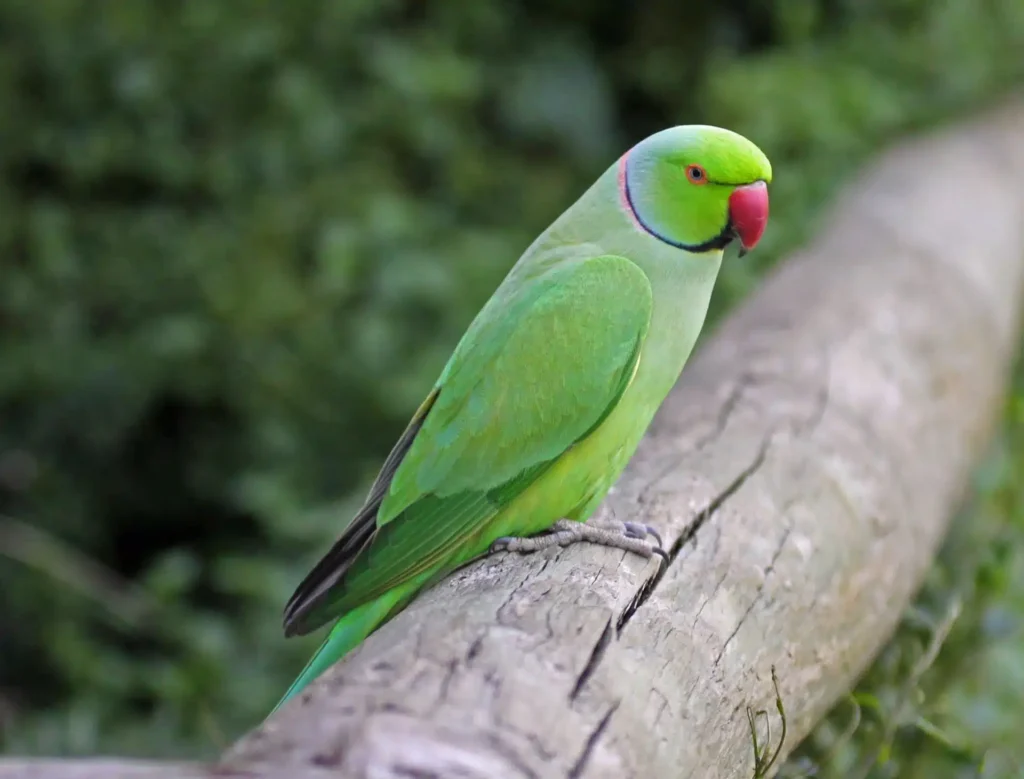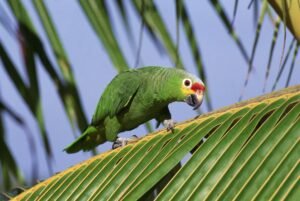Unveil the Beauty and Brilliance of Indian Ringnecks
Introduction:
Indian Ringneck Parrots (Psittacula krameri manillensis) are renowned for their striking appearance, intelligence, and impressive ability to mimic human speech. Native to the Indian subcontinent, these birds have become popular pets due to their vibrant plumage, engaging personalities, and relatively easy care requirements. Known for their distinctive ring markings and sleek bodies, Indian Ringnecks are a favorite among bird enthusiasts looking for a lively and captivating companion.
These medium-sized parrots typically measure around 40 cm in length, with a long, slender tail and a powerful, curved beak. Their plumage comes in a variety of colors, including green, blue, yellow, and grey, with males displaying a characteristic black and pink ring around their necks. Indian Ringnecks are highly social and thrive on interaction, requiring plenty of mental stimulation and socialization to stay happy and healthy.
In the wild, Indian Ringnecks are found in diverse habitats, ranging from forests and savannas to urban areas. They are adaptable and resourceful, feeding on a diet of fruits, seeds, nuts, and flowers. In captivity, these parrots need a balanced diet, a spacious cage, and regular interaction with their human caregivers. With proper care, Indian Ringnecks can live up to 25-30 years, offering long-term companionship and joy.

Facts:
| Fact | Details |
|---|---|
| Scientific Name | Psittacula krameri manillensis |
| Common Names | Indian Ringneck Parrot, Rose-Ringed Parakeet |
| Year Discovered | 1769 |
| Kingdom | Animalia |
| Phylum | Chordata |
| Subphylum | Vertebrata |
| Class | Aves |
| Order | Psittaciformes |
| Family | Psittaculidae |
| Genus | Psittacula |
| Species | P. krameri |
| Natural History | Native to the Indian subcontinent, found in forests, savannas, and urban areas |
| Physical Information | Medium-sized bird, around 40 cm in length, with a variety of plumage colors |
| Appearance | Long, slender tail, powerful curved beak, males with black and pink ring markings around the neck |
| Scientists Names | Described by Giovanni Antonio Scopoli in 1769 |
| Region | Indian subcontinent |
Appearance:
Indian Ringnecks are medium-sized parrots, typically measuring around 40 cm in length. They have a long, slender tail and a powerful, curved beak. Their plumage comes in various colors, including green, blue, yellow, and grey. Males are distinguished by a black and pink ring around their necks, while females and juveniles lack this feature. Their bright plumage and sleek bodies make them visually striking and elegant.
Distribution:
Indian Ringnecks are native to the Indian subcontinent, including countries such as India, Pakistan, Nepal, and Sri Lanka. They inhabit a range of environments, from forests and savannas to urban areas and agricultural lands. Their adaptability has allowed them to thrive in diverse habitats.
Habits and Lifestyle:
In the wild, Indian Ringnecks are highly social birds that live in flocks. They are known for their playful and inquisitive behavior, often seen engaging in acrobatics and vocalizations. Their diet consists mainly of fruits, seeds, nuts, and flowers. As pets, Indian Ringnecks require regular social interaction, mental stimulation, and a variety of toys to keep them entertained.
Care Guide:
Caring for an Indian Ringneck involves providing a spacious cage with plenty of perches, toys, and enrichment activities. Their diet should include high-quality pellets, fresh fruits, vegetables, and occasional nuts. Fresh water should always be available. Regular social interaction and out-of-cage time are essential for their well-being.
Physical Characteristics:
Indian Ringnecks have a robust build with a long, slender tail and a strong, curved beak. Their plumage varies among individuals, with common colors including green, blue, yellow, and grey. Males have a distinctive black and pink ring around their necks, which adds to their striking appearance.
Diet and Nutrition, Foods to Avoid:
In the wild, Indian Ringnecks feed on a variety of fruits, seeds, nuts, and flowers. In captivity, their diet should include a mix of high-quality parrot pellets, fresh fruits, and vegetables. Foods to avoid include chocolate, caffeine, alcohol, avocado, and any foods high in salt, sugar, or fat, as these can be toxic to birds.
Breeding and Business:
Breeding Indian Ringnecks in captivity requires a suitable environment and a deep understanding of their needs. They typically lay 2-6 eggs per clutch, with an incubation period of about 23-28 days. Providing nesting boxes and a nutritious diet rich in calcium and protein is essential for successful breeding.
Behavior:
Indian Ringnecks are known for their intelligent and playful behavior. They form strong bonds with their human caregivers and enjoy interactive play. These birds require regular mental stimulation, training, and social interaction to prevent boredom and behavioral issues. They are excellent mimics and can learn to speak and perform tricks.

FAQs:
| Question | Answer |
|---|---|
| How long do Indian Ringnecks live? | Indian Ringnecks can live up to 25-30 years in captivity. |
| What do Indian Ringnecks eat? | Their diet includes high-quality pellets, fresh fruits, vegetables, and occasional nuts. |
| Where can I see Indian Ringnecks? | They are native to the Indian subcontinent and popular as pets worldwide. |
| Do Indian Ringnecks talk? | Yes, they are excellent mimics and can learn to speak and perform tricks. |
| How do Indian Ringnecks socialize? | They are social birds that enjoy interacting with their flock or human caregivers. |
Related Birds or Mate:
Related species include other members of the Psittacula genus, such as the Alexandrine Parakeet and the Plum-Headed Parakeet, which share similar habitats and behaviors. Indian Ringnecks are often compared to these species due to their vocal abilities and social behavior.
Type and Quality Prices:
| Type | Price Range |
|---|---|
| Pet Quality | $200 – $600 |
| Breeder Quality | $600 – $1,200 |
Factors Affecting Price:
Prices can be influenced by factors such as age, health, color mutations, and whether the bird is hand-raised or parent-raised. Geographical location and availability also play significant roles.
Price for the Bird in Different Regions and Countries:
| Region/Country | Price Range |
|---|---|
| United States | $200 – $1,200 |
| Europe | €180 – €1,000 |
| Australia | AUD 300 – AUD 1,500 |
| Asia | $250 – $1,100 |
References:
Categories: Companion Birds, Medium-Sized Parrots, Vocal Birds, Asian Birds, Social Birds, Seed-Eating Birds, Pet Birds, Intelligent Birds
Views: 4








